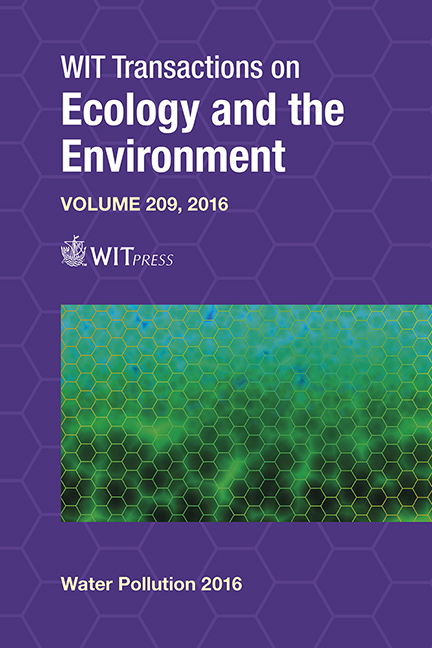Drinking Water Treatment By Iron Anode-based Electrocoagulation: Humic Acids And Arsenic Removal
Price
Free (open access)
Transaction
Volume
209
Pages
12
Page Range
127 - 138
Published
2016
Size
1,054 kb
Paper DOI
10.2495/WP160121
Copyright
WIT Press
Author(s)
A. Pop, C. Bordianu, R. Pode, I. Vlaicu, N. Lungar, K. Bodor, F. Manea
Abstract
Electrocoagulation (EC) represents an alternative to the conventional coagulation process in water treatment in low-capacity plants. Besides the electrode materials, the performance of electrocoagulation is strongly dependent on the raw water matrix. A systematic study has been conducted in this paper in order to optimize the electrocoagulation process operation using iron anode for groundwater with high organic loading and arsenic. The optimization of electrocoagulation parameters was performed, focusing on initial concentration of arsenic and humic acid, current density, the presence of major ions dissolved in water (SO42−, Cl−). Humic substances were quantified in terms of absorbance at 254 nm and total organic carbon (TOC) and the arsenic concentration has been assessed in water samples by atomic absorption spectrometry. To elucidate some mechanistic aspect, SEM/EDAX analysis was performed. A systematic study based on various raw water characteristics has been performed for EC process based on iron electrodes to determine the best operating conditions and also, to identify the limits of this process. The specific energy consumption was calculated in order to demonstrate also the process viability from economical point of view. Various treatment scenarios in relation to raw water characteristics and operation conditions were applied in order to determine the optimal conditions regarding process parameters correlated to the range of water characteristics for the drinking water treatment.
Keywords
arsenic and humic acid removal, electrocoagulation, iron anodes





